LAO025: Luang Prabang 2024
4 Days 3 Nights Luang Prabang
Highlight of the trip:-
– Visit UNESCO World Heritage City Highlights
– Embark on a shared or private cruise to Pak Ou Caves with a stop to taste rice whiskey and explore a cave.
– Enjoy Foodie Walking Tour & Monk Blessing
– Private Must-See Sights and Mount Phousi by bike
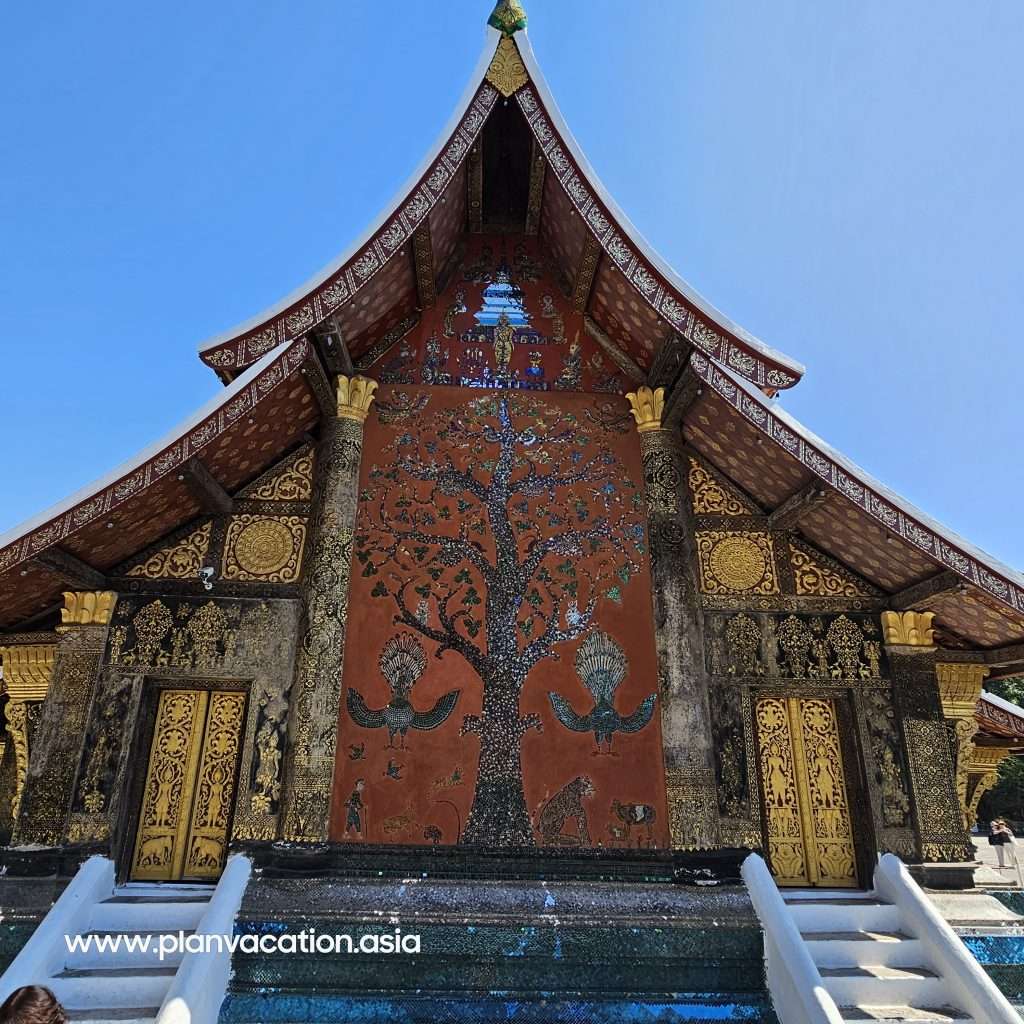


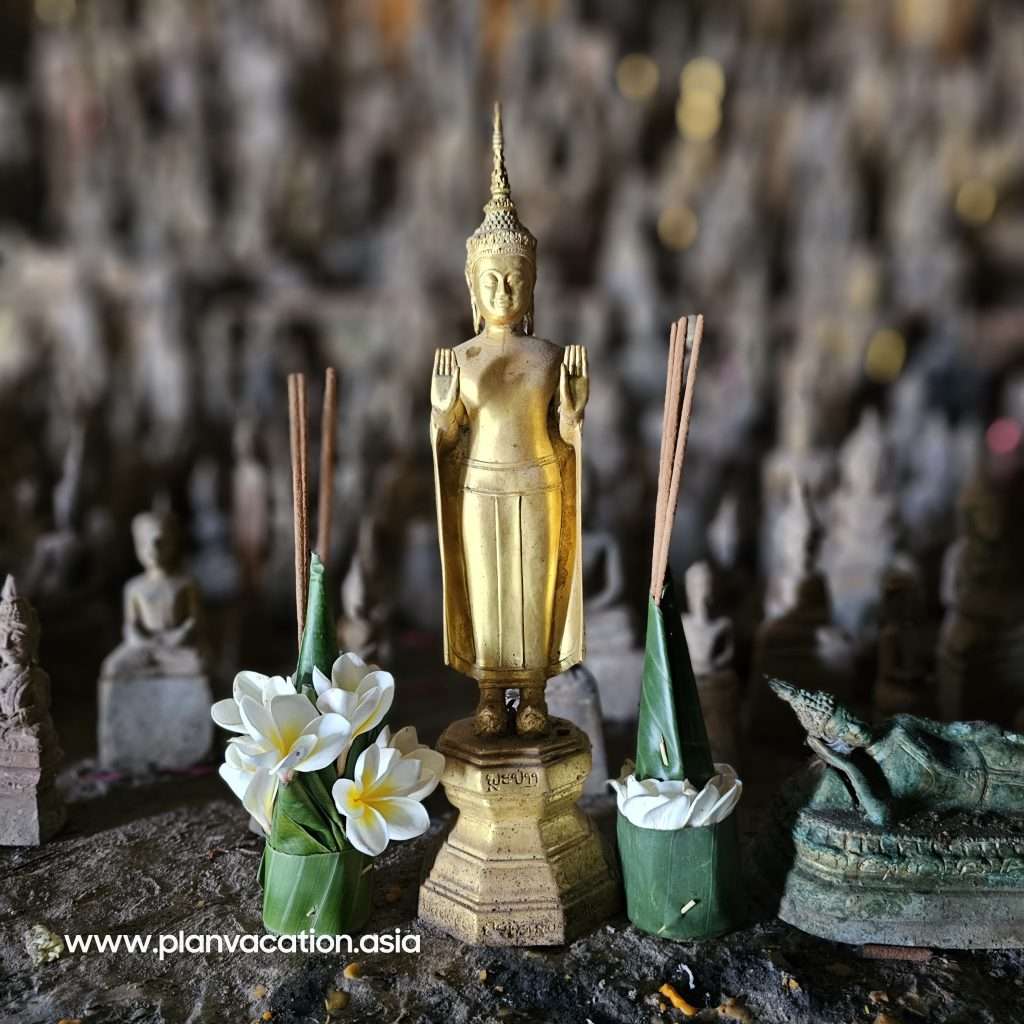


Itinerary:
Day 1 : Luang Prabang
You will be picked-up from the Airport and drive to Back to the hotel for check -in. Late evening drive to local restaurant for dinner and after continue to explore the Night Market, where you can find a lovely collection of handicrafts and handmade textiles by local and hill tribe people surrounding Luang Prabang.
Overnight: Luang Prabang Legend Hotel (Superior) or similar class
Meal (1): Dinner
Day 2 : Luang Prabang City Tour
Do sightseeing with the bicycle by visiting the National Museum at the former Royal Palace, which displays a lovely collection of artifacts reflecting the richness of Lao culture dating from the days of the early kings right through the last sovereign, Wat Mai, Wat Visunnarath, Wat Xiengthong with its roofs sweeping low to the ground, which represent the classical architecture of Luang Prabang temple.
Overnight: Luang Prabang Legend Hotel (Superior) or similar class
Meal (-) : -
Meals (1): Breakfast
Day 3: Luang Prabang Water Fall and Boat Trip
Visit Pak Ou cave, crammed with thousands of gold lacquered Buddha statues of various shapes and sizes. Along the way, we stop at the village of Ban Xang Hai, where they make the distillation of local rice wine. Then we drive about 30 KM to the beautiful Kuang Si Waterfall, where you can splash around in the turquoise pools, swim and relax or walk along the forest paths. Return to Luang Prabang .
Overnight: Luang Prabang Legend Hotel (Superior) or similar class
Meal (1): Breakfast
Day 4 : Luang Prabang
After Breakfast transfer to Luang Prabang Airport or Train Station
Meals (1): Breakfast
CHILD POLICY :
- For children under 4 years and height below 110 cm, charge 50% of the adult price.
- For children 4-10 years old charge 75% of the adult price.
- For children over 10 years old charge 100% for normal price.
Tour Included :
- Room accommodation with daily breakfast
- Meals as indicated in the program
- Transportation with air conditioned vehicles
- German speaking guide
- Admission fee as mentioned
- Travel insurance
Tour excluded:
- All personal expenses
- Meals not specified in the itinerary
- Admission fee not mentioned
- All additional cost of “Compulsory” Dinner either Gala Dinner to be separately charged per person as per below date and subject to change depends on the policy of hotels that concern.
The most memorable and enjoyable part of the trip

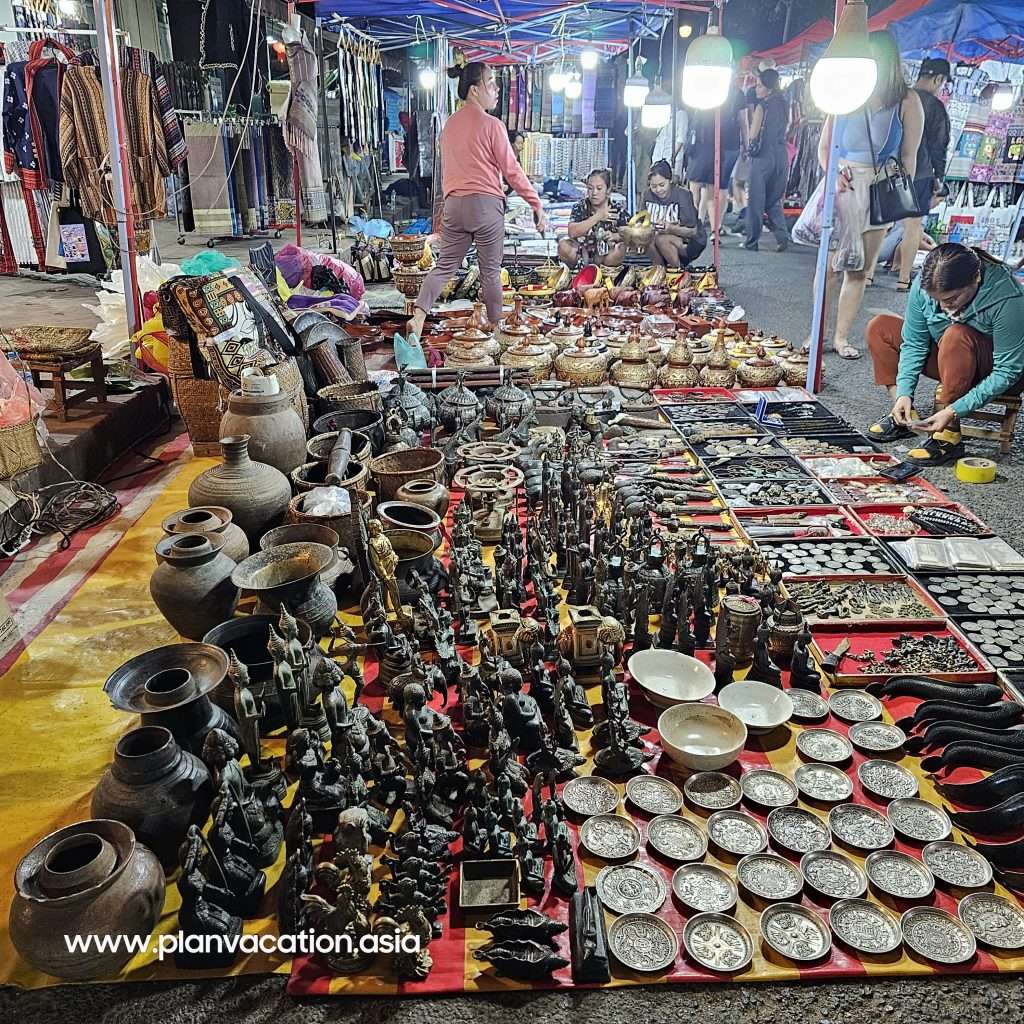




- Luang Prabang night market is a must-experience. It’s an amazing sight and offers the most extensive collection of handicrafts in the country. With around 250 handicraft vendors who sell their hand-made products nightly, the market showcases an extensive variety of handicrafts made by local ethnic groups. On display are many types of textiles, exquisite ceramics, antiques, paintings, coffee and tea, quilts, shoes, silver, bags, ornaments and cutlery made from recycled bombs. There are a lot of interesting items on display at the night market that are hard to find elsewhere.

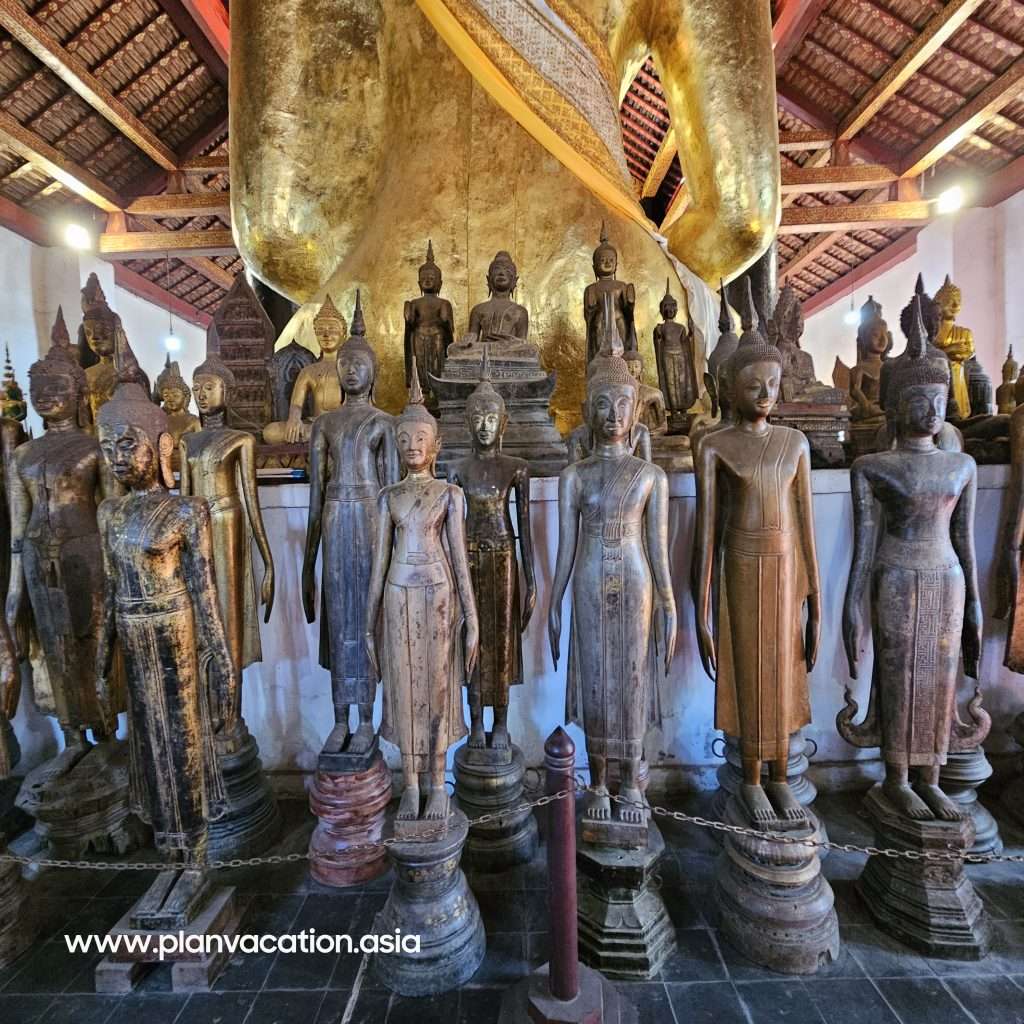




2. Do sightseeing with the bicycle by visiting the National Museum at the former Royal Palace, which displays a lovely collection of artifacts reflecting the richness of Lao culture dating from the days of the early kings right through the last sovereign, Wat Mai, Wat Visunnarath, Wat Xiengthong with its roofs sweeping low to the ground, which represent the classical architecture of Luang Prabang temple.
Royal palace museum luang prabang, the “golden palace”, meant to symbolize the new relationship between Laos and France, was built between 1904 and 1909, just a few years before the kingdom of Luang Prabang was declared a protectorate, and the rest of Laos a colony, of France. The palace design combines the French “beaux arts” style with elements of Lao vernacular architecture, but the building can be said to have been finally completed when king Sisavangvong decided to replace the pinnacle on the roof above the throne room with a new one of a more appropriate Lao design. Beside that, there is a garage of the king inside the Meseum ground. There are several of brand: Lincoln continental, Edsel, Citroen, Sea Horse 35 and Jeep. You can see all of the cars are parking there.
Wat Mai Suwannaphumaham, built in 1796, Wat Mai (New Monastery) was given its present name following the restoration undertaken in 1821 by King Manthathourath. Notice the 4-tiered roof when visiting the temple, as well as the scenes from daily life and the legend of Vessantara on the bas-relief walls.
Wat Mai Suwannaphumaham, built in 1796, Wat Mai (New Monastery) was given its present name following the restoration undertaken in 1821 by King Manthathourath. Notice the 4-tiered roof when visiting the temple, as well as the scenes from daily life and the legend of Vessantara on the bas-relief walls.
Wat Visunnarath, founded in 1512 during the of King Visounnarath (1501-1520), this temple was a symbol of the Kingdom’s unity. The carved wooden railings in the temple’s windows are reminiscent of the Wat Phou temple in Champasak, in the far South of Laos. Inside you can admire ancient statues and steles.
Also located on the grounds of this temple is the That Pathoume, also known as That Mak Mo (the watermelon stupa) because of its shape.
Wat Xiengthong, this temple is not only the most beautiful in Luang Prabang, but arguably one of the most spectacular temples in the entire country. Built by King Setthatirath around 1560 it is a classic example of Luang Prabang style and features a gracefully sloping roof and glass [tile] murals. The best time to visit, especially for photography, is in the morning.Wat Xiengthong, this temple is not only the most beautiful in Luang Prabang, but arguably one of the most spectacular temples in the entire country. Built by King Setthatirath around 1560 it is a classic example of Luang Prabang style and features a gracefully sloping roof and glass [tile] murals. The best time to visit, especially for photography, is in the morning.





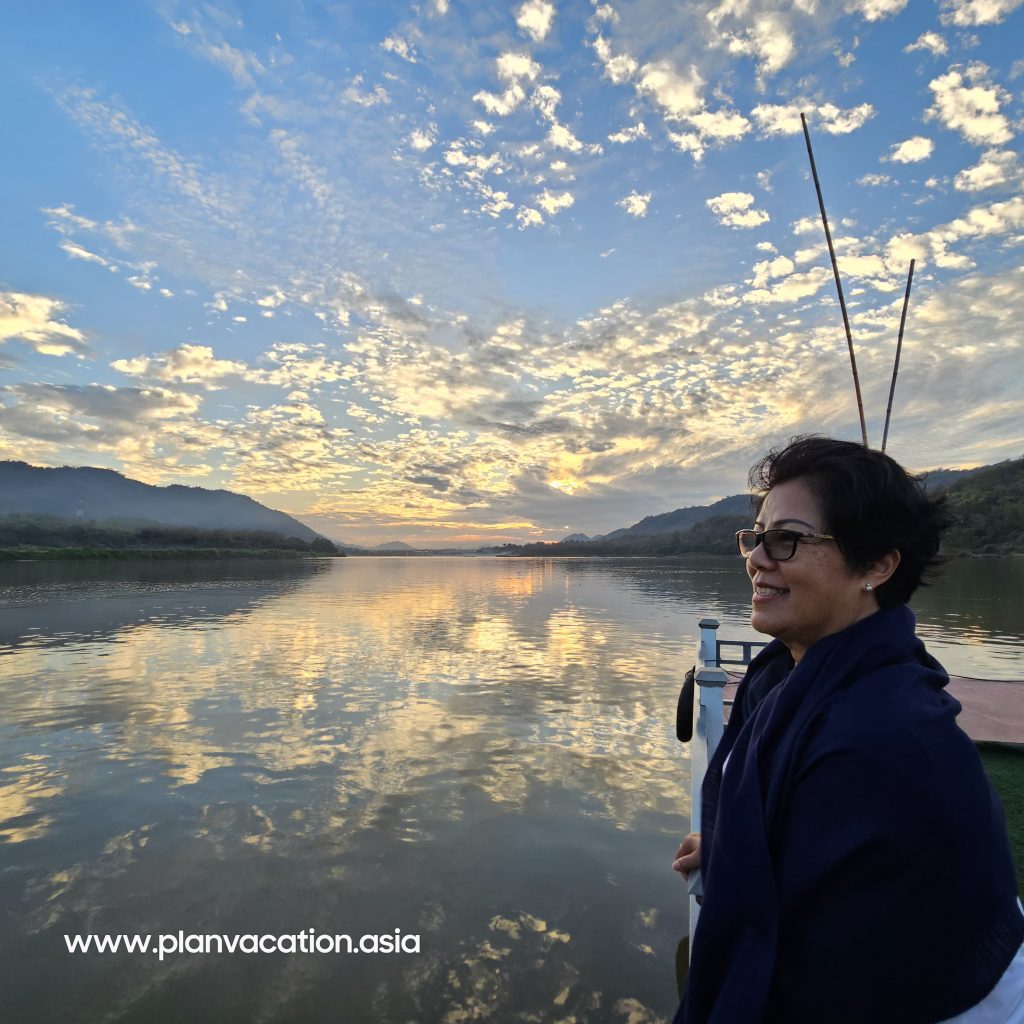
3. Tham Ting or Pak Ou Caves & Slow boat or River cruise, due to its proximity to Pak Ou village, there are actually two separate caverns at this location, which is locally known as Tham Ting.
Pak Ou Caves, 25 km north of Luang Prabang, have a history dating back thousands of years. Packed with over 4,000 Buddha icons, the caves are set in a dramatic limestone cliff at the point where the Mekong joins the Nam Ou River.
There are 2 caves to visit: a lower cave called Tham Ting and an upper cave called Tham Theung. Both serve as shrines to the river spirit and Lord Buddha. The Buddha images in the Pak Ou Caves assume a variety of positions, from meditation to peace and nirvana (the reclining Buddha). The statues are believed to have been left in the caves by local people for hundreds of years.
The waters of the Mekong have for centuries been the major highways in this region, carrying goods, people and ideas up through the heart of Laos. Even today, boat traffic is a busy part of the Mekong. If you like, charter a boat and have your own trip, stopping and looking at what takes your fancy. Great perspective on the city from across the river. Or take a spectacular sunset cruise to relax and take in the natural beauty.

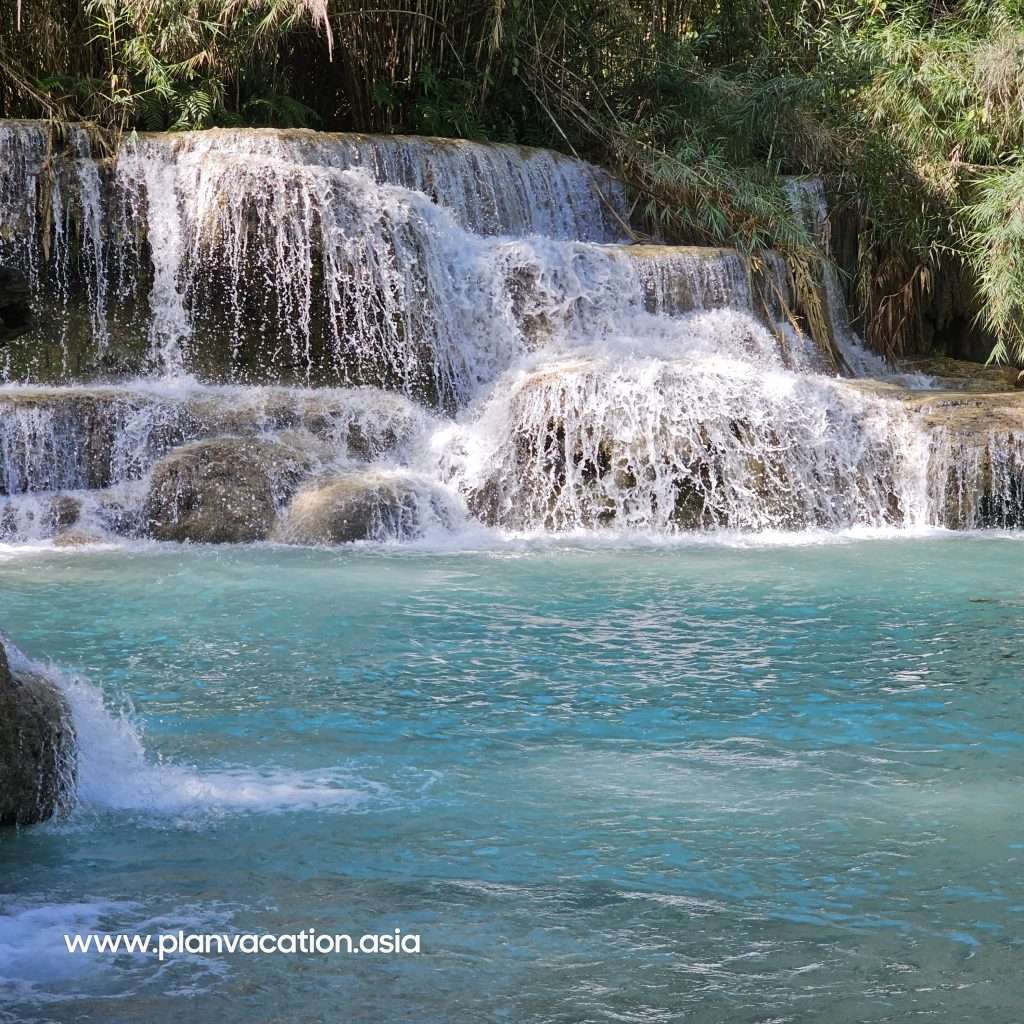




4. Kuang Si Waterfalls , in the dry season the water at Kuang Si (pictured here) takes on a bluish hue, owing to the presence of minerals like copper. In the wet season the water is a deep green and you can hear the sound of the falls well before you can see them.
Kuang Si Falls is one of the most famous natural landmarks in Laos, for excellent reason. With milky-blue-ish white, yet also somehow transparent, pale waters, the cascades tumble over multi-tiered, curving, limestone ledges. All these entwined ribbons of water are enclosed by thick, lush jungle canopy and situated nearby the exquisite UNESCO designated French-colonial city of Luang Prabang.

